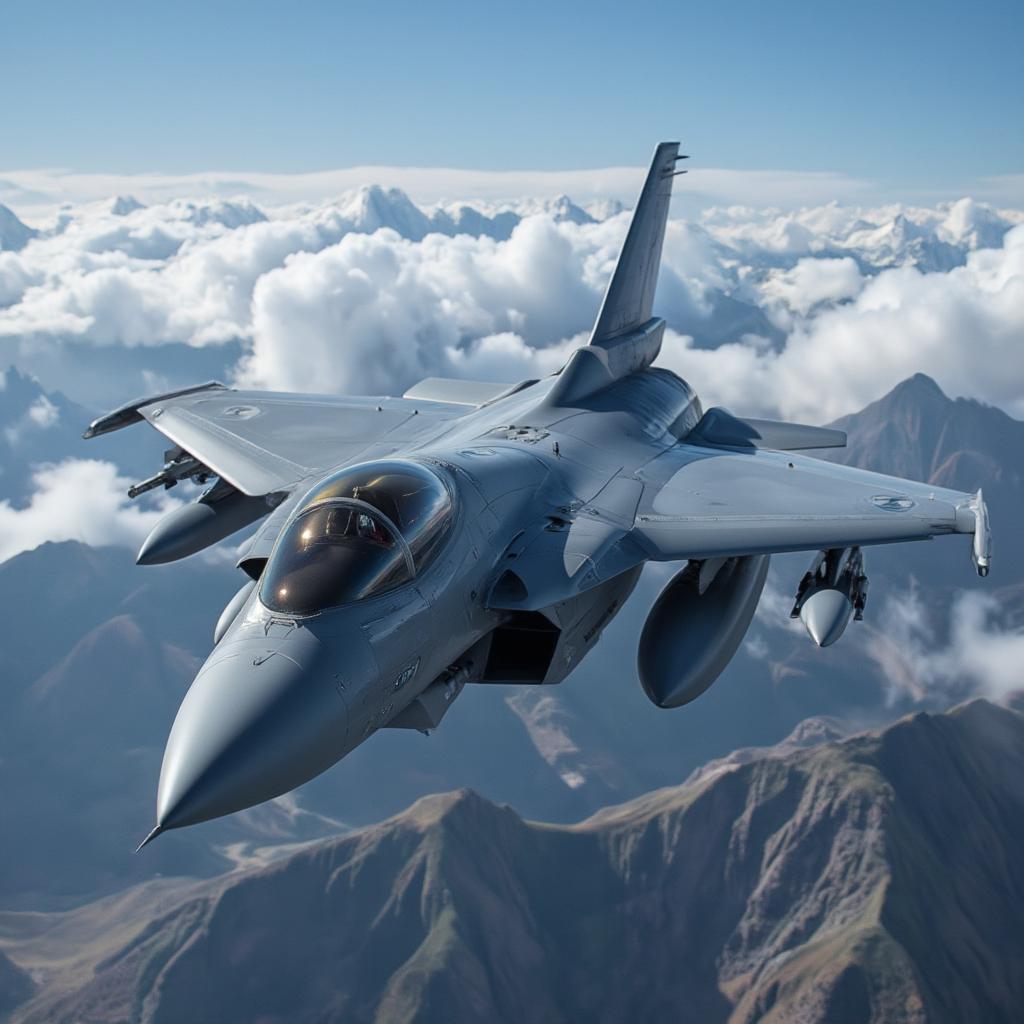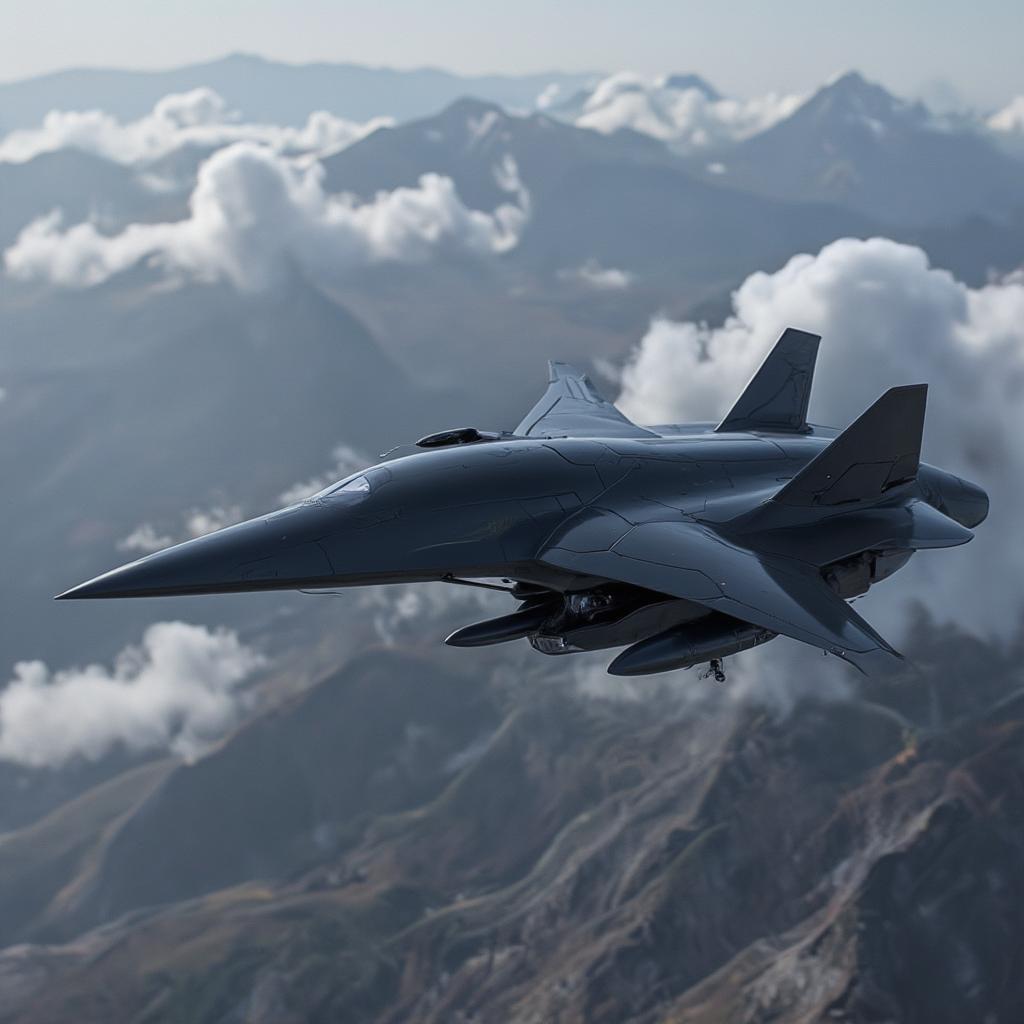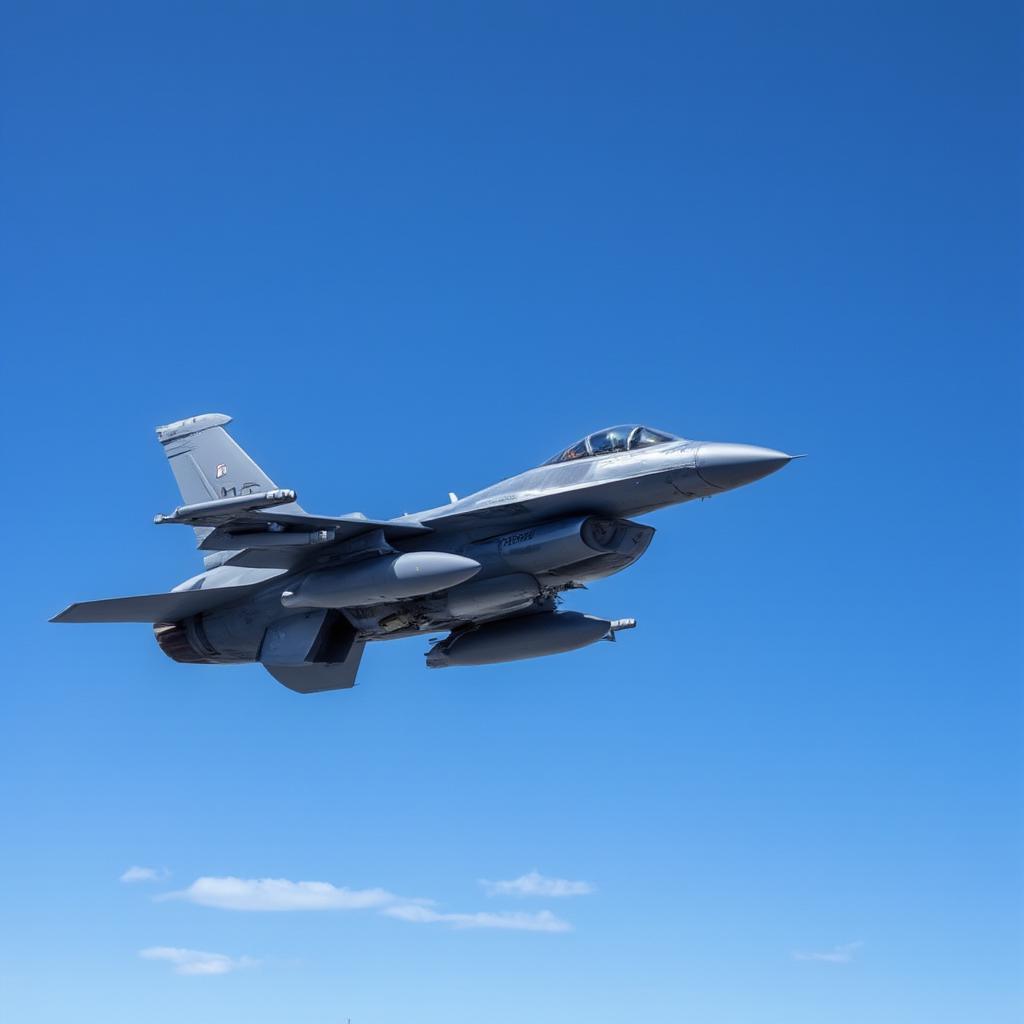The Rise of the 4.5 Gen Fighter: Bridging the Gap to Next-Gen Air Combat
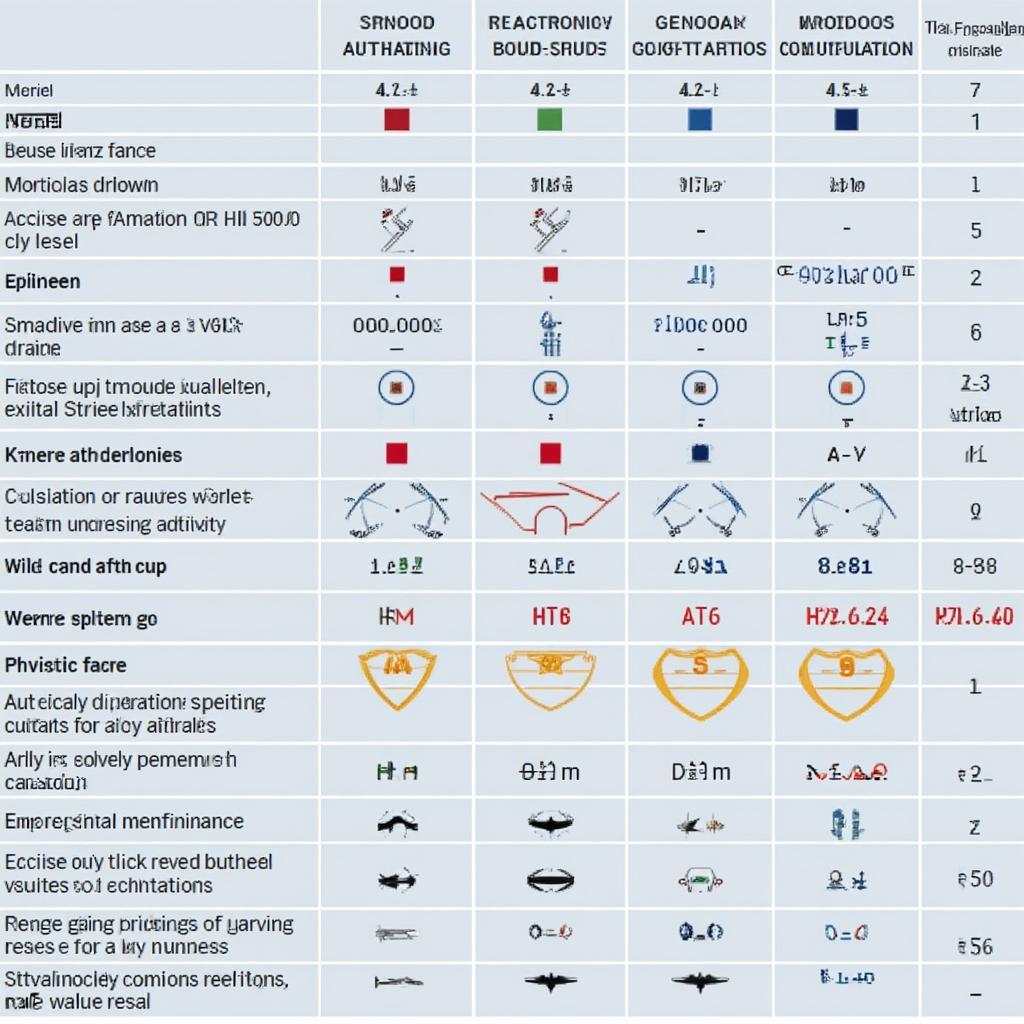
The landscape of modern aerial warfare is constantly evolving, with advancements in technology pushing the boundaries of what’s possible. Nestled between the established 4th generation fighters and the cutting-edge 5th generation platforms lies a crucial category: the 4.5 Gen Fighter. These aircraft represent the pinnacle of 4th-generation design, incorporating significant upgrades and innovations that allow them to compete effectively in today’s complex threat environment.
These fighters aren’t merely upgraded versions of their predecessors; they embody a strategic transition. They integrate advanced avionics, radar systems, and weapon capabilities that allow for enhanced situational awareness and lethality. They are the workhorses of many air forces globally, often providing the backbone of air power while nations develop and deploy their 5th-generation counterparts. The 4.5 generation isn’t just about keeping up; it’s about maximizing current technology and adapting existing airframes to remain relevant and deadly in the skies.
What Exactly Defines a 4.5 Gen Fighter?
The distinction between 4th and 4.5 generation fighters boils down to a series of substantial technological leaps. While 4th-generation aircraft might rely on older radar technology and more analog systems, a 4.5 gen fighter introduces a suite of digital enhancements. This includes:
- Active Electronically Scanned Array (AESA) radar: Significantly enhances detection range, tracking capabilities, and resistance to jamming compared to older mechanically scanned radars.
- Advanced Avionics: Includes enhanced displays, sensor fusion, and network-centric warfare capabilities, allowing pilots a greater understanding of the battlespace and the ability to share information with other aircraft and ground control.
- Improved Electronic Warfare (EW) Suites: Better capabilities to disrupt enemy sensors and communications, and protect themselves from incoming threats.
- Modern Weapon Systems: Integration of precision-guided munitions, longer-range missiles, and other advanced weapons.
- Supercruise capability Some 4.5 generation fighters possess this ability allowing sustained supersonic flight without the use of afterburners.
These advancements represent a leap in combat effectiveness, giving 4.5 generation fighters a considerable edge over older 4th-generation counterparts. It is the careful, iterative improvements that make these aircraft so relevant in today’s global security context.
Key Examples of 4.5 Generation Fighters
Several noteworthy aircraft fall under the banner of 4.5 gen fighter. These platforms serve as exemplars of the technological progress that has been made in the past few decades. Among the most prominent are:
- The Dassault Rafale: A French twin-engine multirole fighter, known for its versatility, advanced sensors, and ability to operate from both land and aircraft carriers. The dassault rafale generation showcases the peak of European aerospace engineering, offering sophisticated electronic warfare capabilities and impressive combat performance.
- The Eurofighter Typhoon: A collaborative European project, the Typhoon is renowned for its agility and potent air-to-air combat abilities.
- The Boeing F/A-18E/F Super Hornet: A staple of the US Navy, the f 18 super hornet generation combines multirole capability with robust air-to-air and air-to-ground firepower. It represents a substantial upgrade over the legacy Hornet, and serves as an invaluable asset in carrier-based operations.
- The Sukhoi Su-35: A Russian multirole fighter jet that rivals many of its Western counterparts in performance and sophistication. It has a unique combination of high maneuverability and advanced weapons systems.
These aircraft have not only redefined their respective air forces but have also set a high bar for competitors globally. They serve as important platforms for evaluating both the future of air combat and the evolution of aviation technology.
Comparing 4.5 Gen Fighters to 4th and 5th Generation Aircraft
The positioning of 4.5 gen fighter within the broader spectrum of aircraft can be better understood through direct comparison.
| Feature | 4th Generation Fighter | 4.5 Generation Fighter | 5th Generation Fighter |
|---|---|---|---|
| Radar | Mechanically scanned | AESA | Advanced AESA/Multi-function |
| Avionics | Analog/Early Digital Systems | Highly integrated Digital | Highly Integrated & Networked |
| Stealth | Minimal or no stealth features | Limited stealth capabilities | High Degree of stealth |
| EW Capabilities | Basic | Advanced | Cutting-Edge |
| Weapon Systems | Primarily 4th-gen Weapons | 4th and 5th-gen capable | Primarily 5th-gen weapons |
| Situational Awareness | Good | Excellent | Superior |
While 4th-generation fighters remain relevant, their capabilities often fall short in the modern battlespace. The 5th-generation platforms, like the F-22 and F-35, are superior in stealth and integration, however, they can be incredibly costly. This is where the 4.5 generation truly shines, they provide a balance of advanced capabilities without the high cost and maintenance associated with 5th generation technology.

“The 4.5 generation fighters are the sweet spot for many nations,” states Dr. Anya Sharma, a lead aerospace engineer at Shock Naue. “They offer a significant increase in combat effectiveness over 4th-gen platforms and can often be acquired and maintained at a fraction of the cost of 5th-gen aircraft.”
The Role of 4.5 Gen Fighters in Modern Warfare
The strategic role of the 4.5 gen fighter is undeniable. These aircraft serve as the backbone of many modern air forces, capable of performing a variety of missions including air superiority, ground attack, reconnaissance, and electronic warfare. They are also crucial in maintaining a credible deterrent against potential adversaries, and often participate in international operations and coalition warfare.
Here’s how they are making a difference:
- Bridging the Capability Gap: For nations that can’t yet afford or develop 5th-generation aircraft, the 4.5 generation provides a crucial step-up in capability.
- Flexibility and Adaptability: Their multirole design allows them to be quickly adapted to a diverse set of missions, increasing their utility on the battlefield.
- Interoperability: 4.5 generation fighters often possess advanced data links that allow them to seamlessly integrate with both legacy and newer systems, a crucial element in multi-national operations.
- Cost-Effectiveness: They present a cost-effective option for achieving air dominance compared to the much more expensive 5th-generation options.
- Long-Term Relevance: Given their continuous upgrades, these fighters are likely to remain valuable assets for decades to come.
The Future of 4.5 Generation Fighters and Beyond
While the focus is increasingly shifting towards 5th-generation fighters and beyond, the 4.5 gen fighter will likely remain a significant component of global air power. Nations will continue to upgrade and refine these aircraft, incorporating new technologies and capabilities as they become available.
Moreover, many countries are focusing on enhancing their existing 4.5 generation fleets rather than committing to purchasing more expensive 5th generation fighter jets. This means that there is an increase in research and development being done within 4.5 generation tech with a focus on:
- Advanced Sensor Integration: Further refining sensor fusion and data processing.
- Artificial Intelligence (AI): Incorporating AI for pilot support and autonomous mission execution.
- Hypersonic Capabilities: Exploring the feasibility of incorporating hypersonic weapon systems.
- Directed Energy Weapons: The integration of laser or other directed-energy weapons systems.
“The 4.5 generation represents the perfect blend of mature technology and modern innovation,” remarks General Thomas Bradford, a retired Air Force commander and now strategic analyst for Shock Naue. “These aircraft offer a potent capability for a wide range of missions, and their continued upgrades will keep them competitive for years to come.”
The transition to 5th-generation aircraft is not an overnight process, and the 4.5 gen fighter serves as a vital bridge. Nations are not necessarily looking to replace these fighters immediately, but rather, looking to augment them to compliment the newer technologies that are available. As new technologies emerge, these aircraft will continue to be adapted and upgraded, continuing their legacy as formidable assets.
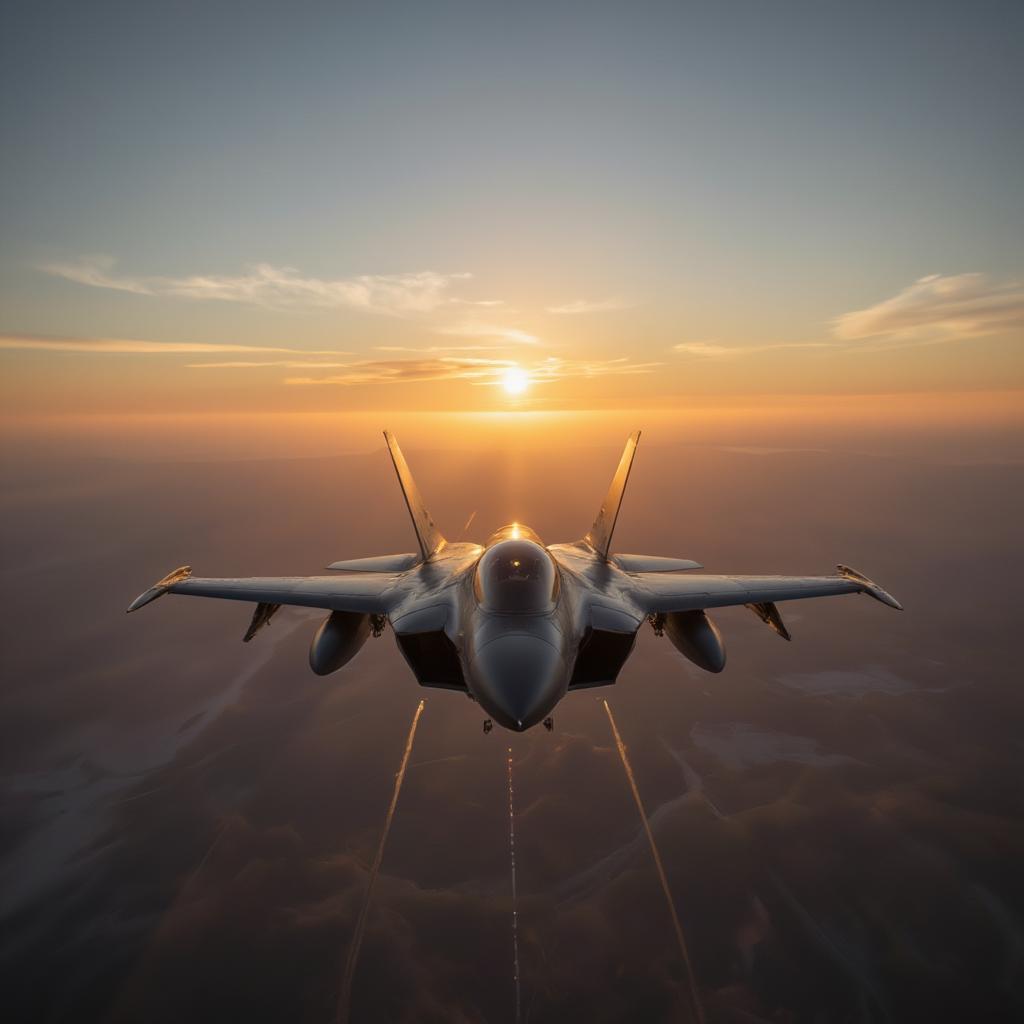
The Strategic Importance of Continuous Improvement
In the realm of aerial warfare, stagnation is equivalent to obsolescence. The continuous improvement and upgrades of the 4.5 gen fighter is not just about maintaining parity with adversaries; it’s about achieving and sustaining a strategic advantage. Nations must remain committed to innovating their existing air power, to avoid the risk of falling behind.
The strategic importance of the 4.5 gen fighter goes far beyond its combat performance, acting as a critical component of modern military forces:
- Deterrence: The presence of advanced fighters serves as a significant deterrent to potential aggressors.
- Influence: Nations that can project power through modern air forces hold significant influence on the world stage.
- Technological Advancement: Continued development within the 4.5 gen fighter category fuels progress in the broader aerospace industry.
- Economic Impact: The production and maintenance of these aircraft drive economic growth and create skilled jobs.
The evolution from 4th-generation fighters to the 4.5 gen fighter is a testament to the ingenuity and relentless innovation within military aviation. While newer technologies and platforms continue to emerge, the legacy of these advanced fighters will continue to hold an important and relevant position in the global balance of power.
The 4.5 gen fighter is more than just an upgraded warplane; it’s a symbol of ongoing innovation, adaptive design, and the quest for continuous improvement in the global race for technological superiority. For a more comprehensive understanding, explore our articles on the best 4.5 generation fighter aircraft and a list of 4.5 generation fighter aircraft for a detailed breakdown of these potent platforms.
Conclusion
The 4.5 gen fighter stands as a crucial bridge between legacy systems and future technologies. They are not simply placeholders; they represent a powerful, versatile, and cost-effective solution for maintaining air dominance in today’s challenging security landscape. As nations continue to navigate a rapidly changing world, the importance of these advanced fighters cannot be overstated. Their legacy will undoubtedly be felt for decades to come as they continue to evolve, and push the boundaries of what’s possible in military aviation. With continuous upgrades, the 4.5 gen fighter is a cornerstone of many air forces’ strategic arsenal, and will remain so in the years to come.
Frequently Asked Questions
-
What makes a fighter jet 4.5 generation rather than 4th generation?
A 4.5 gen fighter includes advancements such as AESA radar, advanced avionics, improved electronic warfare systems, and integration of modern weapon systems, while 4th-generation aircraft typically lack one or more of these technologies. They represent a significant step up in combat effectiveness. -
How does a 4.5 generation fighter compare to a 5th generation fighter?
5th generation fighters are defined by their stealth characteristics, sensor fusion capabilities, and advanced networking, offering a greater edge in many aspects of aerial warfare, but they are considerably more costly. 4.5 generation fighters provide a balanced solution, offering advanced technologies at a more cost-effective price point. -
What are some examples of 4.5 generation fighter aircraft?
Key examples include the Dassault Rafale, Eurofighter Typhoon, Boeing F/A-18E/F Super Hornet, and Sukhoi Su-35. These aircraft have become the cornerstones of many modern air forces, and demonstrate the height of this technology. -
Are 4.5 generation fighters still relevant today?
Absolutely, they are highly relevant. These aircraft represent a cost-effective way to modernize existing forces, and will likely continue to evolve with additional upgrades. Their mix of advanced technologies makes them well-equipped to handle modern combat challenges. -
What future upgrades can we expect for 4.5 generation fighters?
Future enhancements could include better sensor integration, integration of AI for autonomous missions, hypersonic weapon capability, and integration of directed-energy weapons. These upgrades aim to keep the 4.5 generation platforms relevant against next-gen threats. -
Do 4.5 generation fighters have stealth capabilities?
While most don’t have the full stealth of 5th-gen aircraft, some 4.5 generation fighters incorporate limited stealth technologies like radar absorbent materials or design features aimed at reducing radar signatures. The level of stealth varies depending on the aircraft. -
How are 4.5 generation fighters used in modern air combat?
They serve multiple roles, including air superiority, ground attack, reconnaissance, and electronic warfare. Their ability to integrate with various systems, including legacy and newer technologies, make them a crucial asset in modern combined operations. -
Why would a nation choose a 4.5 gen fighter instead of a 5th gen fighter?
The primary reason is cost. 5th-gen fighters come with significant purchase and maintenance expenses. 4.5 gen aircraft offer a good balance of advanced technologies at a fraction of the cost. Nations might also opt for the known and proven capabilities of the 4.5 generation technology. -
How does the AESA radar enhance the capabilities of 4.5 generation fighter aircraft?
The Active Electronically Scanned Array (AESA) radar significantly improves detection ranges, tracking, and the ability to jam enemy systems. This technology makes 4.5-generation fighters much more effective at locating and engaging targets compared to older generation fighter jets.


